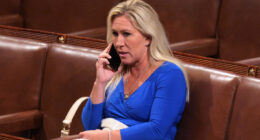Guest post by Shannon Tollman, BA.
In the Netflix show Love on the Spectrum, one of the characters is asked, “How was your day?” They reply, “Nothing out of the ordinary happened today, and that’s how I prefer it.” This statement sums up one of the key elements of autism: finding comfort in the predictable. So it’s no surprise that planning a trip that feels safe and ordinary is key to formulating a successful travel strategy.
In this article, we’ll form an autism travel toolkit complete with ideas for using social stories, calendars, checklists, and anti-sensory-overload strategies to turn travel chaos into amazing family memories.

Tool #1 – Form alliances
With the COVID-19 pandemic introducing masks and invasive tests, traveling has become a stressful endeavor for everyone, but perhaps even more so for people on the spectrum.
“For those with sensory aversions, it can be difficult to keep a mask on for long-haul flights or tolerate testing,” says Dina Farmer, a Certified Autism Travel Advisor, about the feasibility of traveling post-pandemic with autistic children.
Finding organizations and travel services that understand autism can help you navigate new restrictions and gain mask exemptions. Dina suggests some alliances and travel services, which can be found at Sunflower Lanyard Program and TSA Cares. The Autism Travel website also includes both autism-friendly and autism certified organizations.

A study published in the International Journal of Travel Medicine and Global Health highlights the impact traveling with a supportive airline can have on the experience of families with autism spectrum disorder. An airline in Ireland was cited as an example of the benefits of including of a sensory room, where autistic passengers can decompress from the stresses and sensory overload of the airport. Unfortunately, not every airline provides such a service, but this research does also provide some ideas for how to improve our own travel experiences.
Tool #2 – Create a roadmap and social story
One of the biggest challenges a child with autism might face when traveling is the break from routine. A good way to overcome this hurdle is to prepare the child by means of a social story or PECS boards in the weeks leading up to your trip. A social story is a written narrative with accompanying pictures, made to illustrate certain situations, problems, and challenges, and how children can deal with them.
Make sure to add all the steps that may overwhelm your loved one when they get to the airport. This process should help them prepare for changes in their routine and manage the activities that come with the unfamiliar. Autism Speaks and JetBlue created a downloadable story about the preparation for a flight, which you could use.
READ RELATED: Eight Ukrainian Children with Cancer Evacuated to St. Jude for Treatment

Kidmunicate recommends talking about the trip with your autistic loved one every day at a set time and using the social story as a guide. After a while, put all the pictures on a table randomly and then, together with your child, work on putting them in chronological order. As the trip nears, your child should be able to explain all the steps and be ready to go.
You could also create a calendar to count down the days until the trip, with the departure date clearly marked. Your child can check off each day until the departure date, giving them a clear visual way to prepare for the upcoming change in routine.
Another tip is to organize a practice run. Some airports allow children to experience going through security, waiting in line, and boarding a flight prior to the actual trip. So, call the customer service department at your local airport and ask how to access this service.

Also consider creating a list of trip rules in advance, and take time to familiarize your child with keeping their seatbelt on, wearing a mask, (if you didn’t get a mask exemption) and so on, using rewards for positive behavior.
Tool #3 Create a checklist and prepare for sensory overload
To mitigate the stresses and sensory overload of the airport, make sure that before you leave your home, you have a checklist and that you bring all essential items in a carry-on bag. You could include sensory toys as well as a favorite item of comfort, noise canceling headphones, a weighted blanket, sunglasses, snacks, and entertainment. All these tools will be useful items to create your own “sensory room,” giving your loved one relief from the stress of the day.
If you can, book a direct flight, and choose your seat ahead of time so you can pick one that isn’t by the restrooms or in a heavy traffic zone on the plane.

Summing Up
Armed with these travel success tips, you can create a trip that feels like less of a departure from the routines of daily family life. Hopefully you’ll be able to work with a certified autism travel advisor on the best places to go in terms of the facilities that understand autism. Once you’ve completed all your preparation, it will be time for all the pieces to come together. Enjoy the trip!
Did you enjoy this article? Learn more from Autism Parenting Magazine, the leading international publication for autism families.
Source: The Autism Site Blog






